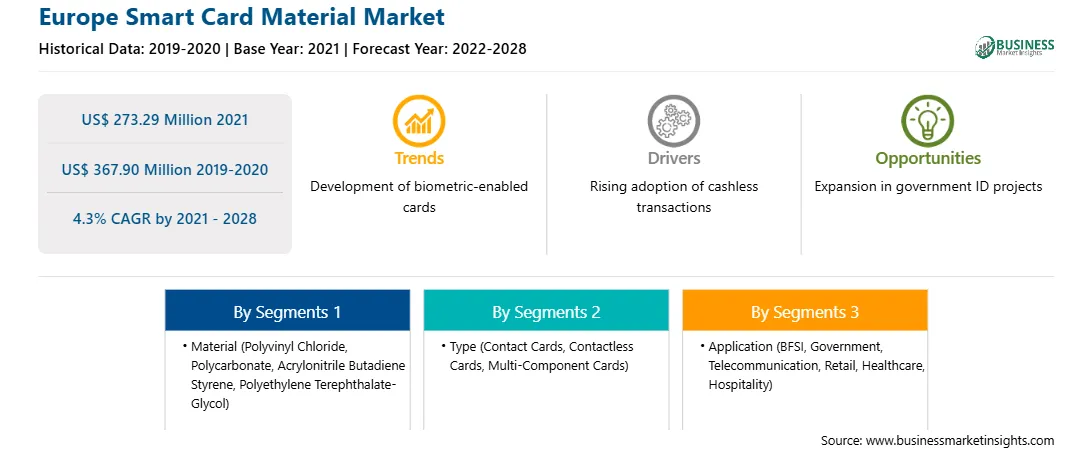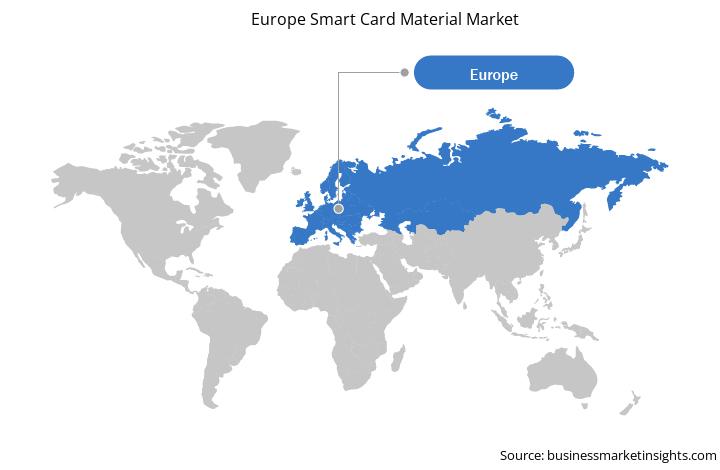Materials, such as PETG, ABS, PVC, PC, and PET, are used for the manufacturing of smart card bodies to provide the required thickness, resistance, and durability to the cards. These materials are most widely used to build smart cards used in the sectors, such as BFSI, government, hospitality, and retail. The increasing digitalization in the banking and financial services industry across the region to make the banking operations convenient with efficient data management is expected to increase the demand for smart cards. Also, the growing development of modern infrastructure and rising investments in the banking sectors are among the key factors supporting the growth of the banking and financial industry, which is further augmenting the usage of smart cards. Moreover, financial institutions and merchants are issuing and accepting the contact smart cards for credit and debit payments and are highly migrating to EMV (Europay, MasterCard, and Visa) for payment methods. This factor boosts the demand for smart cards and materials required to develop those cards. In the government sector, smart card technology is highly recognized as the most appropriate technology for identity applications to meet security requirements. Smart cards are used to monitor military credentials by government and materials such as polyethylene terephthalate-glycol (PETG) and polyethylene terephthalate (PET) are used for producing smart cards for this kind of application, which requires longer life span. Thus, the technological advancements in banking and government and other regulatory bodies are expected to contribute toward the growth of the market. In addition, growing digitalization in the retail industry for strengthening the payment infrastructure is augmenting the consumption of smart cards, which helps in driving the market growth. The smart card technology is highly accepted by consumer for selecting mode of payment in both online and offline retailing. Thus, the increasing usage of the smart card in the retail industry is propelling the demand for smart card materials, which helps in driving the market growth.
Europe is one of the worst affected economies due to the COVID-19 pandemic. The unprecedented rise in the number of COVID-19 cases across the US and Canada and the subsequent lockdown of numerous manufacturing facilities in the countries have negatively influenced the growth of the various markets. The significant disruption in manufacturing has had an impact on the demand for smart card materials in the region. The COVID-19 pandemic has also impacted the retail and hospitality industry. The pandemic’s impact on the retail and hospitality industry was immediate and profound. However, the market is reviving on account of the government's significant measures, such as vaccination drives. Various industries are also overcoming the challenges of supply chain disruptions of their raw materials. Many players are resuming pre-pandemic investment plans as businesses gain confidence in stabilizing economies and anticipate increased demand. This is expected to provide the impetus for market growth.
With the new features and technologies, vendors can attract new customers and expand their footprints in emerging markets. Thus, the Europe smart card material market is expected to grow at a good CAGR during the forecast period.
Strategic insights for the Europe Smart Card Material provides data-driven analysis of the industry landscape, including current trends, key players, and regional nuances. These insights offer actionable recommendations, enabling readers to differentiate themselves from competitors by identifying untapped segments or developing unique value propositions. Leveraging data analytics, these insights help industry players anticipate the market shifts, whether investors, manufacturers, or other stakeholders. A future-oriented perspective is essential, helping stakeholders anticipate market shifts and position themselves for long-term success in this dynamic region. Ultimately, effective strategic insights empower readers to make informed decisions that drive profitability and achieve their business objectives within the market.

| Report Attribute | Details |
|---|---|
| Market size in 2021 | US$ 273.29 Million |
| Market Size by 2028 | US$ 367.90 Million |
| Global CAGR (2021 - 2028) | 4.3% |
| Historical Data | 2019-2020 |
| Forecast period | 2022-2028 |
| Segments Covered |
By Material
|
| Regions and Countries Covered | Europe
|
| Market leaders and key company profiles |
The geographic scope of the Europe Smart Card Material refers to the specific areas in which a business operates and competes. Understanding local distinctions, such as diverse consumer preferences (e.g., demand for specific plug types or battery backup durations), varying economic conditions, and regulatory environments, is crucial for tailoring strategies to specific markets. Businesses can expand their reach by identifying underserved areas or adapting their offerings to meet local demands. A clear market focus allows for more effective resource allocation, targeted marketing campaigns, and better positioning against local competitors, ultimately driving growth in those targeted areas.

The Europe Smart Card Material Market is valued at US$ 273.29 Million in 2021, it is projected to reach US$ 367.90 Million by 2028.
As per our report Europe Smart Card Material Market, the market size is valued at US$ 273.29 Million in 2021, projecting it to reach US$ 367.90 Million by 2028. This translates to a CAGR of approximately 4.3% during the forecast period.
The Europe Smart Card Material Market report typically cover these key segments-
The historic period, base year, and forecast period can vary slightly depending on the specific market research report. However, for the Europe Smart Card Material Market report:
The Europe Smart Card Material Market is populated by several key players, each contributing to its growth and innovation. Some of the major players include:
The Europe Smart Card Material Market report is valuable for diverse stakeholders, including:
Essentially, anyone involved in or considering involvement in the Europe Smart Card Material Market value chain can benefit from the information contained in a comprehensive market report.